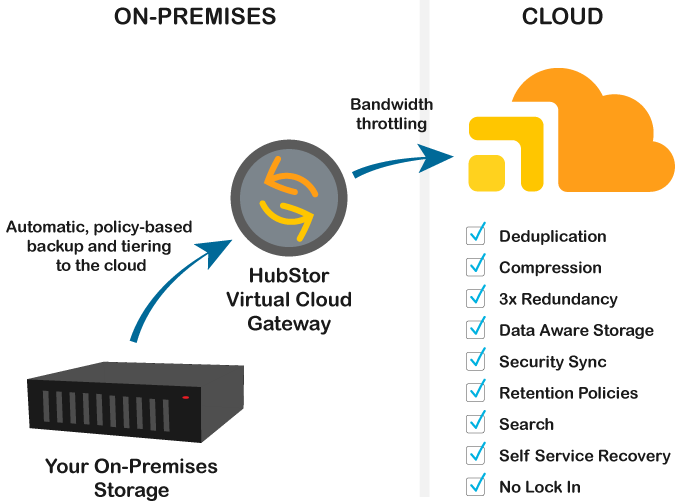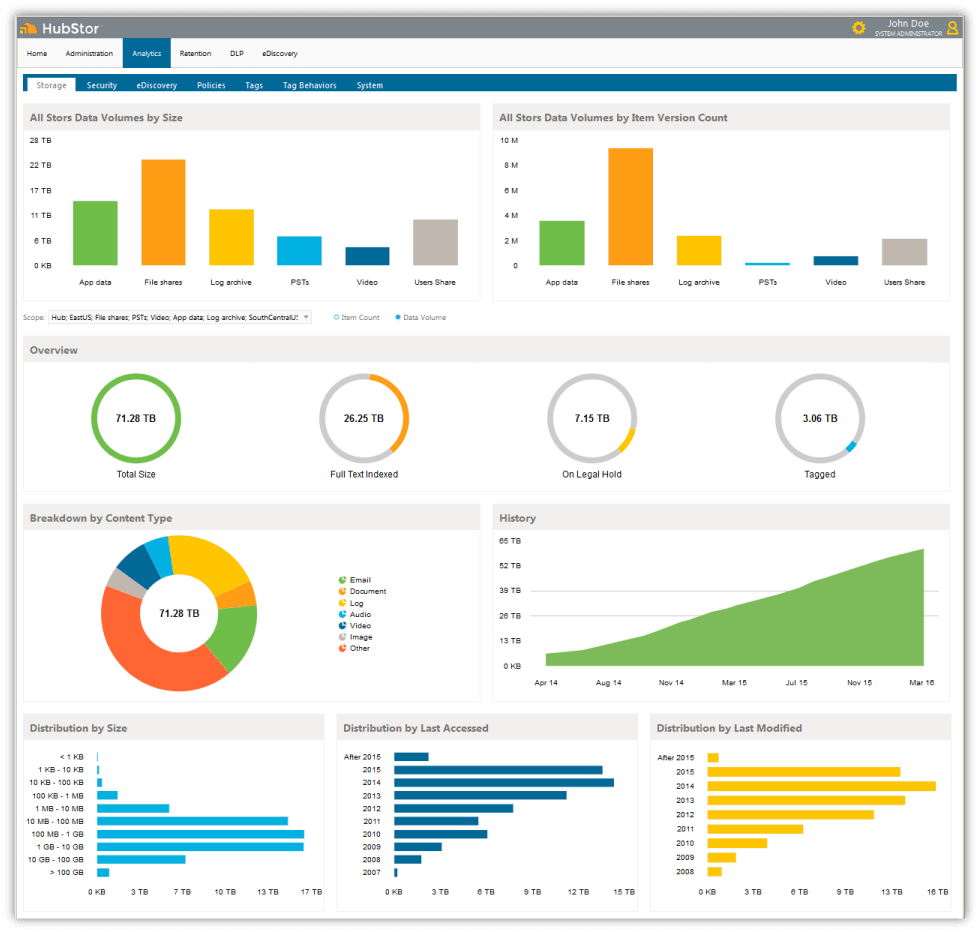HubStor – a member of the Microsoft Enterprise Cloud Alliance, makes archiving with cloud storage completely turn-key for enterprise IT teams. Its solutions help businesses offload inactive data from their aging storage infrastructure and economically protect, search, and manage unstructured data workloads in the cloud. Recently, HubStor announced the general availability of CoolSearch, a new solution aimed at legal and compliance teams that need economically searchable cold storage. Below is our interview with Geoff Bourgeois, Chief Executive Office at HubStor.

Q: As a co-founder, can you tell us why you started HubStor?
A: My co-founder Greg Campbell and I interviewed IT professionals responsible for managing large – sometimes petabyte-scale – storage infrastructures about the hurdles they faced in leveraging the cloud. We kept hearing from their perspective that the cloud needed to be easier to use, it had to provide self-service user access, and they needed insight and controls to manage data in the cloud for their data governance and discovery requirements. In other words, the cloud needed to be more than just storage and it had to be easier to consume with an escape hatch for getting their data out as needed. When we examined the marketplace, we either found productivity solutions like Box or Office 365 that aren’t geared for many of the unstructured data workloads that are ideal for storing in the cloud, or we found cloud gateway vendors that help you get your data to the cloud but lack cloud data management.
Recommended: Proposable – All-In-One Cloud Proposal Software For Smart And Efficient Proposal Creation
Q: How is HubStor making it easier for organizations to adopt cloud storage?
A: For starters, HubStor includes a virtual cloud gateway that allows our clients to easily and securely synchronize their data to the cloud. Our approach enables ongoing synchronization of the data, folder structures, and permissions from within existing storage investments. This means our clients do not have to worry about data migration to some other location in their network before data moves to the cloud. With HubStor, getting data to the cloud just happens automatically using policies that work against the data in place, and the client doesn’t have new infrastructure they need to configure and manage.
Furthermore, many organizations will not adopt the cloud if they can’t meet their requirements for compliance, litigation, HR processes, and security. We’ve gone to great lengths to make the cloud a data aware experience with bank-grade security and easy tools to manage, search, and export data from the cloud archive.
Q: What differentiates HubStor from other cloud archive solutions like amazon glacier?
A: Many of the companies that find us have first looked at Amazon Glacier. They’re enticed by its low cost, but they have reservations about the solution for various reasons. Our first major advantage that companies like is that our virtual cloud gateway provides policy and automation for capturing data where it sits, along with ongoing synchronization of its access rights. We also store the data with deduplication and compression to further reduce their costs. In the cloud, instead of being a dumping ground for the data, we do what’s called “data aware storage” which is a fancy way of saying there are automated analytics, activity intelligence, and searching capabilities in the cloud storage that give administrators the ability to manage and report on things like retention, user activities, and security aspects like data sensitivity.
Recommended: UnifyCloud – Helps Companies Advance Their Adoption Of Cloud Computing
Q: Where are you seeing adoption of the service?
A: The primary market we focus on is the United States, but we also see interest from organizations based in Europe, Canada, and South Africa. Customer traction is primarily coming from industry verticals that generate large volumes of data and have requirements to store it long term. For instance, financial services, law firms, medical device companies, civil engineering, life sciences. But we also see adoption coming from not-for-profit and educational organizations too.
Q: What investments have you made to provide a better customer experience?
A: Customer success is something that will always be a top priority for us. We are right now in the process of exposing dashboards that give our clients visibility into the usage and health of their HubStor tenant. We have automated monitoring that notifies us if something is wrong in a tenant so that we can proactively resolve it. We’re also starting to use our monitoring capabilities to see when a component in a HubStor tenant is underutilized. In this case, we suggest lowering the performance class of the underutilized component to help reduce the client’s cloud costs. In the future, we expect to automate this and give clients the ability to set thresholds for auto-scaling their HubStor tenant up or down based on performance demands, activity, and possibly even budget.

Recommended: EPC Technologies Launches Oracle Cloud Services To Help Organizations Drive Innovation And Business Conversion
Q: What is the best thing about Hubstor that people might not know about?
A: Our clients know this, but it isn’t obvious without talking to us: I’d have to say the transparency of our commercial model. What I mean is that we provide complete transparency into our pricing. HubStor makes money purely as a markup of a client’s cloud consumption. This markup is volume discounted, so it decreases as the client uses more of the cloud. We deploy each client into their own dedicated tenant and we daily update the tally of the cloud costs. We also give full visibility into our markup, which we guarantee will not be adjusted higher for the life of a client’s subscription. There are no other cost factors in our model. What this means is that our clients have a pure model of paying only for what they use, and the usage is all transparently metered by the cloud provider (in this case, Microsoft Azure). We feel this is the best commercial approach for an infrastructure solution like HubStor.
Q: What developments can we expect from HubStor in the future?
A: We’re seeing demand for HubStor’s virtual cloud gateway to expand its support to data repositories such as SharePoint. In the cloud, we’ll continue making investments in our analytics, search, and data management features. We’re also seeing strong interest in functionality that allows clients to re-organize and use their data in the cloud in various new ways. For example, running specialized analytics against targeted subsets. This is where HubStor has the greatest potential in my opinion – to enable businesses to turn their archives into a strategic advantage in addition to it already being a defensive shield for their business.
Activate Social Media:



